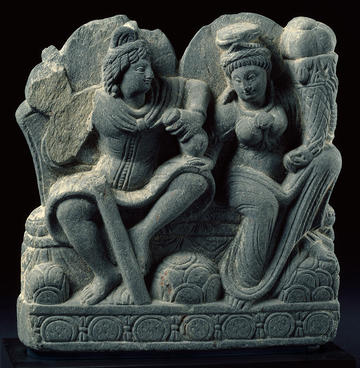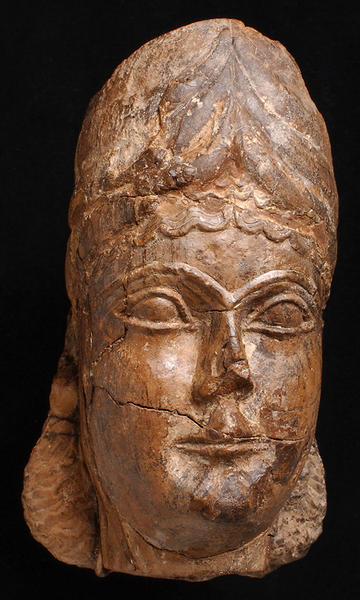GLOBAL GENDER AND THE GODDESS PROJECT
PAST PROJECT
Drawing on representations of ancient gods and goddesses, the wider Global Gender and the Goddess research project brings to light the stories of gender through time and examines the myth of matriarchy.
A short film Goddesses, Gender and the Myth of Matriarchy has been produced with historians Maria Misra and Bihani Sarkar, and Ashmolean curator Anja Ulbrich. These three experts explore the stories and depictions of ancient deities in our collections, from Aphrodite and Durga to Cybele, Ishtar and the Willendorf Venus. They show how these divinities are multi-faceted and fluid, revealing in their wake a complex and changing narrative of how gender was historically perceived.
Film contributors are:
Maria Misra, Professor of Global History, University of Oxford, and Fellow of Keble College
Bihani Sarkar, Lecturer in Comparative Non-Western Thought, Lancaster University
Anja Ulbrich, A.G. Leventis Curator of Cypriot Antiquities at the Ashmolean Museum
WATCH THE GODDESSES AND GENDER FILM
https://www.youtube.com/embed/gNL_lYuO9gs?si=x3WdLd7S5BADiVjJ?rel=0&cc_load_policy=1
About the research project
This research explores changing ideas of gender globally, since pre-history to the present and has been guest curated by Professor Maria Misra who is researching a global history of gender at the University of Oxford and Keble College.
It coincided with a three-day conference Global Gender: Pasts, Presents, Futures, which took place on 24–26 June 2024 in Oxford.
The research at the Ashmolean looked particularly at historic representations of gods and goddesses in the context of the wider Global Gender project.
Nineteenth and 20th-century histories often interpreted these deities according to their own societies' culture and values. Some academics and archaeologists came to believe in a single 'Great Goddess' from which all other goddesses had originated. This view tended to obscure the complexity of ancient views of goddesses.

Panchika and Hariti, Buddhist deities, 201-400 CE, carved grey schist sculpture

Head of the goddess Ishtar, 750 BCE - 600 BCE, terracotta figurine

Durga Mahishasurmardini, 19th century, bronze figurine
New research tends to focus more on how these individual goddesses, such as Durga, Hariti and Ishtar (above) would have been seen in their own societies.
As part of the project, the Ashmolean has collaborated with Professor Maria Misra to also create a display ‘Demon, Mother, Maker of Kings’, and facilitate pop-up tours in the Museum led by young people, aged 16–24.
In addition, young people shared their own ideas of gender and contributed to a new Smartify audio tour of objects in the Museum, coming soon.
There was also a display of their creative work on show outside the Learning Studio, from 19 Jun 2024 – 18 Jan 2025.
With these activities we invited audiences to examine the Ashmolean collection through the lens of gender, exploring ideas of fluidity, binaries and divinity throughout history. More information on the project will be available soon on the History Faculty Oxford University website.






